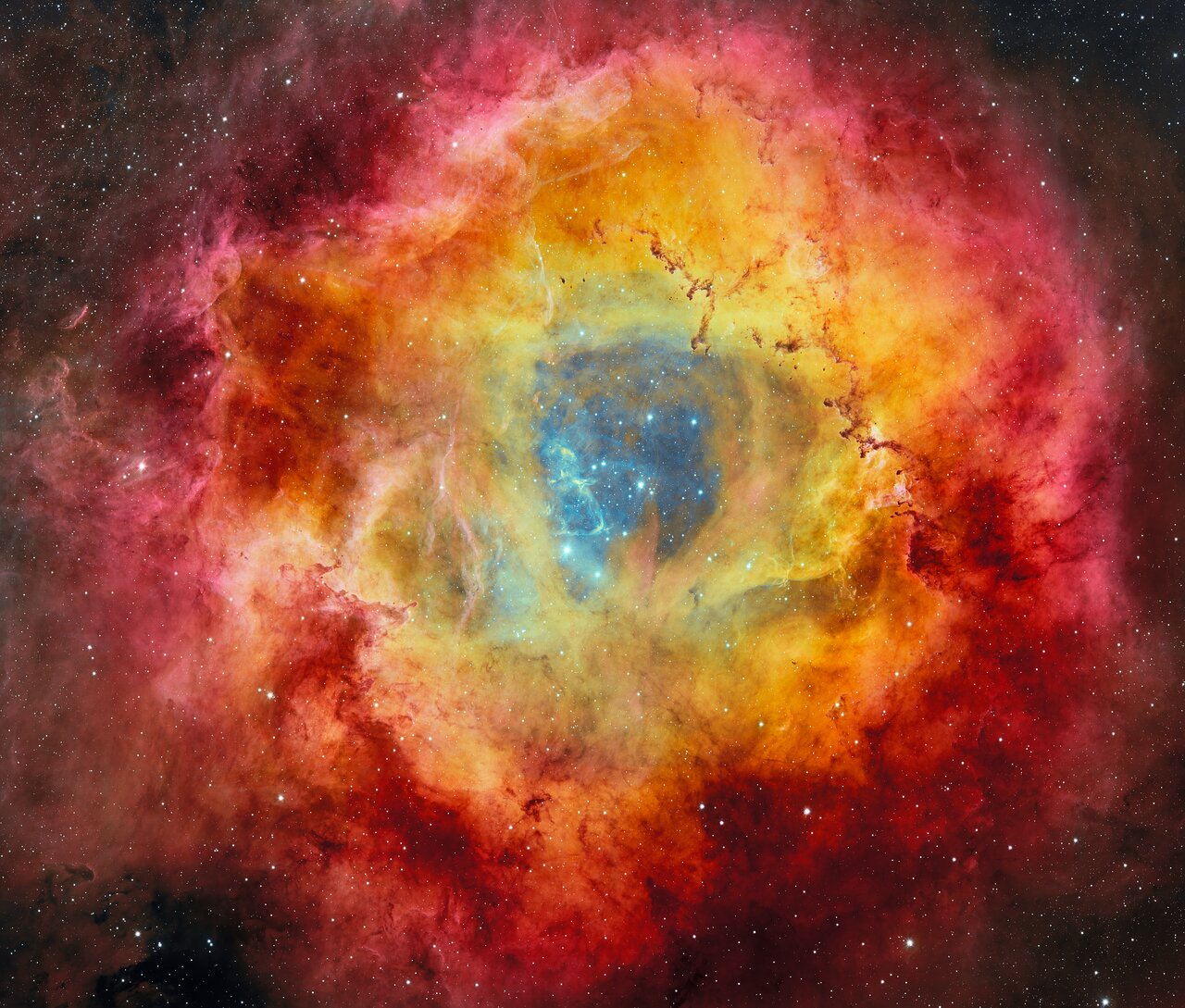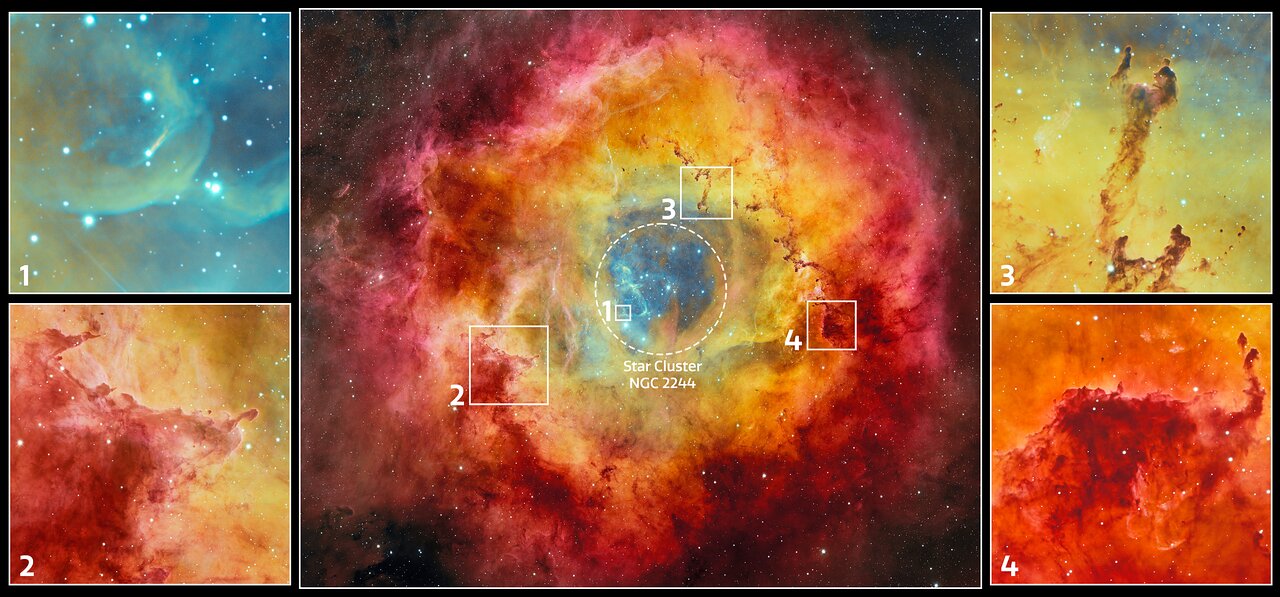The Rosette Nebula blossoms in deep house, captured on this fantastic picture taken by the high-resolution Darkish Power Digital camera, illustrating how scorching, vivid stars on the coronary heart of the Rosette are energizing the molecular fuel round them.
The Rosette Nebula is a welcome sight for astrophotographers because it rises into the northern hemisphere’s winter sky within the constellation of Monoceros, the Unicorn, simply to the southeast of Orion and boxed contained in the Winter Triangle constructed from the celebs Sirius, Procyon and Betelgeuse. Positioned about 5,000 light-years away, the Rosette Nebula is ephemeral when seen via the telescope eyepiece, a ghostly ring on the very fringe of detectability due to its low-surface brightness. Nonetheless, it actually struts its stuff when imaged in lengthy exposures, none extra so than right here, on this view captured by the Darkish Power Digital camera (DECam) mounted on the four-meter Victor M. Blanco Telescope on the Cerro Tololo Inter-American Observatory in Chile.
The five hundred-megapixel decision of the DECam exhibits the Rosette in all its splendor. The rationale for its title is clear. In contrast to many deep-sky objects, the Rosette Nebula really seems like what it’s named for: an enormous wreath of fuel and mud, 130 light-years throughout.
The Rosette is a area of star formation. At its coronary heart is a star cluster, NGC 2244, which incorporates a number of scorching, blue, large younger stars; in contrast to its surrounding nebula, the star cluster is seen to beginner astronomers via binoculars and even to the unaided eye from a darkish website.
Associated: Darkish Power Digital camera captures record-breaking picture of a useless star’s scattered stays
Winds of radiation emanating from that star cluster are ionizing the fuel within the Rosette and have, in reality, cleared out the opening in the midst of the nebula. The radiation energizes the fuel, inflicting completely different gases to glow, or emit, at attribute wavelengths, therefore why such a nebula known as an “emission nebula.” The filters used on this picture seize emission from hydrogen (pink), oxygen near the nebula’s central cavity (golden yellow) and ionized silicon close to the nebula’s edge (pink). There are, after all, different gases inside this molecular cloud that weren’t detected this time round.

The fibrous darkish areas are clouds of impenetrable mud, probably wrapped round nascent stars. They’re generally known as “elephant trunks” due to their lengthy, droopy look. One of many trunks, nicknamed the “Wrench Trunk,” seems to spiral because it twists across the magnetic subject strains entwined throughout the nebula. Additionally, among the many gases are many Bok globules — compact clumps of chilly mud that is likely to be cocooning particular person star programs nonetheless coming into being. A whole lot of them are scattered across the Rosette, many sufficiently small to type brown dwarfs, that are failed stars missing the mass required to turn out to be a totally fledged, hydrogen-fusing star.

Our solar, and certainly our photo voltaic system, had been born in a nebula 4.6 billion years in the past, and it is believed that this nebula was probably very very like the Rosette Nebula. The Rosette’s star cluster, NGC 2244, is calculated to be about two million years previous, which is historic in human phrases, however for a star that is barely the blink of an eye fixed. A number of the most large stars within the cluster will quickly go supernova, their blast waves maybe blowing a lot of the remainder of the Rosette away. What will likely be left will likely be a cluster of much less large, extra sun-like stars. As this cluster progressively disperses over half a billion or a billion years, possibly life will evolve on one of many planets round these stars and someday look to the heavens, see an emission nebula just like the Rosette, and suppose again to how their very own star was born, identical to we do.



